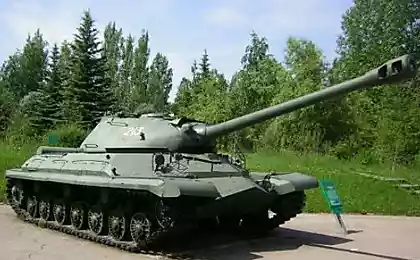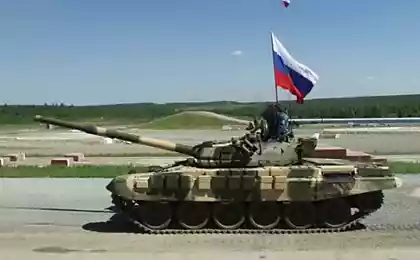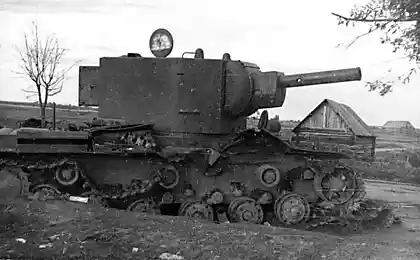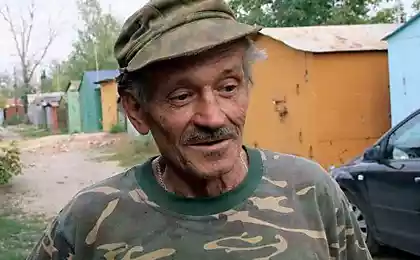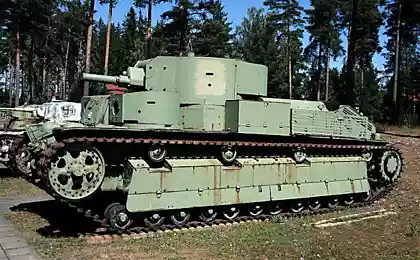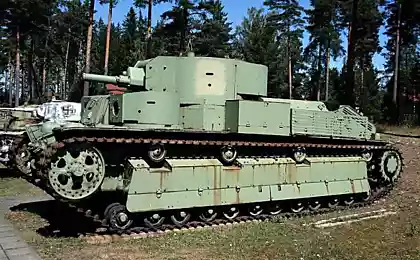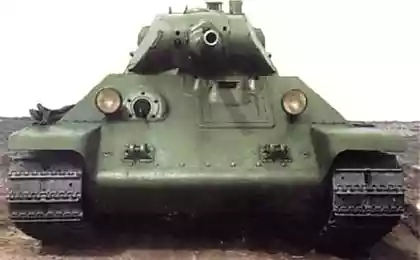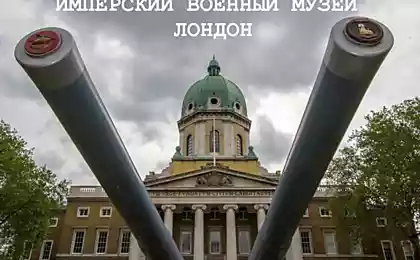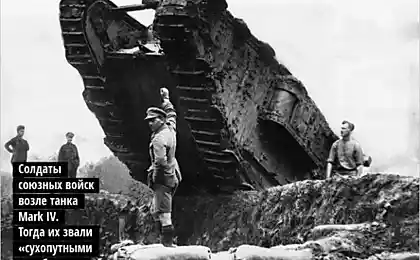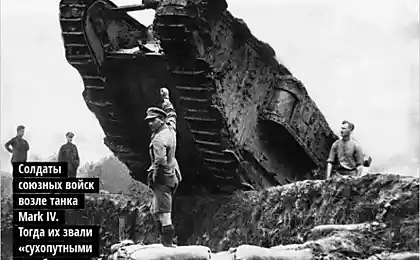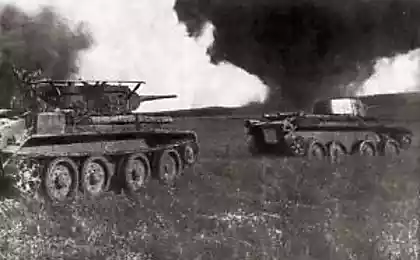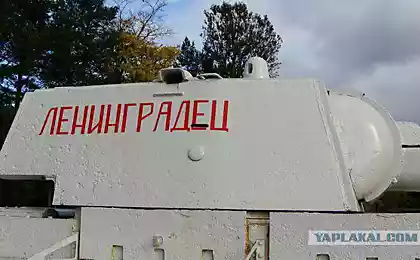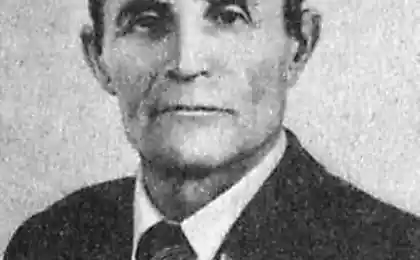2033
NOR-1 Tank
This is one of the most famous tanks NOR-1 ("Fright") - produced during the defense of Odessa in 1941 and represents the common agricultural crawler tractor STZ-NATI, leather armor plates. In this instance "gun" is a pure sham. The project developed a tank chief engineer of the plant. January Uprising PK Romanov, AI Obednikov and Captain William G. Cogan. Tractors protected welded armor (and in some cases just steel) plates taken from the Odessa Shipyard. Armed with light machine guns and machine guns in a rotating turret, and used as a tower of destroyed tanks and self-made design. Typically, the armament of the tank were two 7, 62-mm machine gun DT.
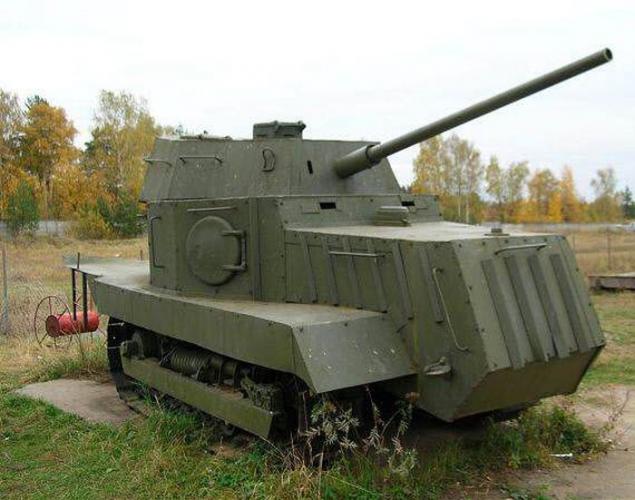
On the night of September 20, 1941 20 tanks were used in the battle against the Romanian part of the siege of the city, with a special rate has been made on the psychological effects of the use of tanks. Tanks were included lights and siren and without artillery support, they moved to the Romanian trenches. The enemy was put to flight. After this fight the tanks stuck the name "NO-1", which stands for "Fright". This term is explained by the fact that in the absence of large-caliber guns muzzle light guns were increased to make the tanks more "serious" look, and sometimes simply installed on tanks dummy guns (like the car in the photo). In addition, according to the recollections of veterans, while driving a tank published a terrifying roar.
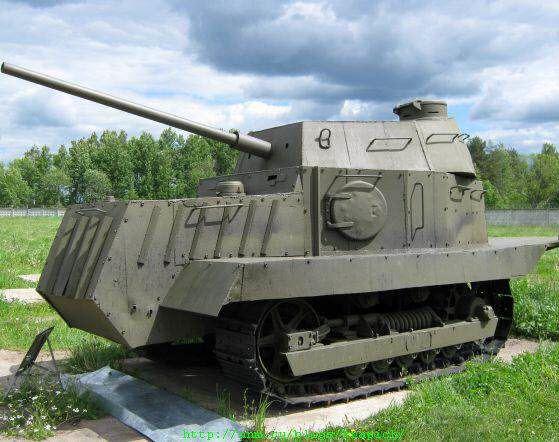
According to reports, the autumn of 1941 from 50 to 60 bronetraktorov was released Kharkov Tractor Plant. The story of their creation is as follows: After a series of defeats suffered by the Red Army in the summer of 1941, and large losses in tanks, the Soviet leadership has adopted a number of urgent measures. July 20, 1941 as a result of the meeting of T-bills of the USSR adopted a resolution number 219 "On organization of production of 2 million bronetraktorov." In accordance with mass production scheduled to deploy to bronetraktorov two tractor-leading enterprises: Kharkov Tractor (HTZ) and the Stalingrad Tractor (STZ) plants. And bronetraktora had to be by-products: both in the factories was a preparation for the production of tanks - medium T-34 at Stalingrad, and light T-60 at the Kharkov. The project is commissioned to develop a design office of a tank of NATI. It was supposed to book and equip the tractor 45-mm tank gun and use as anti-self-propelled guns. In early August, NATI experienced four experimental sample bronetraktorov with 45-mm cannon, constructed on the basis 1TMV, STZ-3, SKHTZ Nati and STZ-5. For mass production opted for on the basis of STZ-3 when booking tractor chassis was reinforced, and to ride on it established a rubber-coated rollers and tracks with tractor STZ-5. The cab driver was dismantled in its place was set with armored cockpit armor thickness of 10-25 mm. Bronetraktor armed with 45-mm tank gun 20K samples 1932/34/37's. For melee crew had gun DP transported inside. Ustanavlemaya gun had limited angles of fire - to impose it on purpose it was necessary to deploy the entire tractor. When serial production machine received index HT3-16 (sometimes held in the documents as the T-16). Taking into account that the FTZ has mastered the production of T-34 tanks, and HTZ just begun preparatory work for the production of T-60, the People's Commissar for Tank Industry VA Malyshev, it was decided the bulk of production bronetraktorov deploy in Kharkov. The plan provided for manufacture by October 1941 at the Kharkov Tractor nearly a thousand HTZ-16, 500 more in Stalingrad. Bronedetali for them was to deliver Novokramatorsky Machine Works. The latter, in turn, got rolling with Mariupol Ilyich. Bronetraktorov production began in late August 1941, but due to constant failures with accessories, and did not work on the high-volume level. Accurate data on the combat use of these machines, but there is every reason to believe that they were used in the defense of Kharkov in the autumn of 1941.
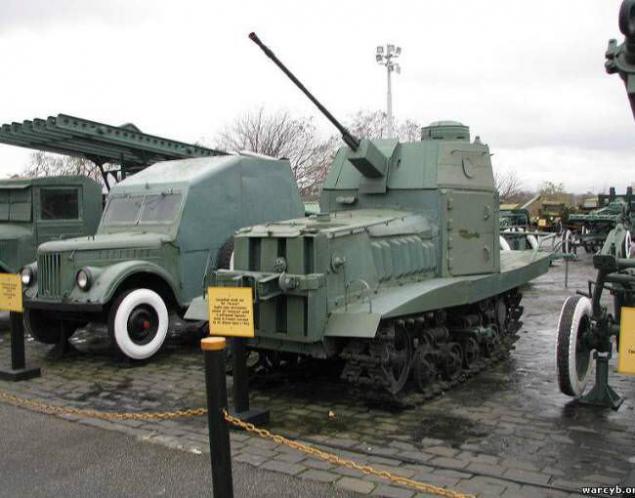
It is also known about the participation of improvised armored vehicles in the defense Moonsund islands. Thus, in order to strengthen the fire defense, defenders of the islands on their own initiative built tractors from 4 tanks armed with machine guns. On "ezelskih tanks" after the war in great detail recalled the former in 1941, the translator of one of the two Estonian battalions BEAVER Islander A.Klaas. Give him the word: "... tractor-tank was built in Kuressaare apprenticeship under the guidance of masters and Helga Oyasauna. Served as the basis of the tank-type tractor NATI instead cab and bonnet was made impervious to bullets superstructure. Empirically, it was found that six-millimeter steel sheet, even when taken twice or three times, does not protect against rifle bullets. Then the master chose this way: between two steel plates leaves a gap of 3 - 4 inches and fill it with cement. These plates are protected even from armor-piercing bullets. All the superstructure of the tank was cooked pieces of flat plates, as in schools bending plate was impossible. And failed to make a rotating turret - had on each side of the tower to make a hole for the shooting, from which you can stick the barrel of a rifle or light machine gun. In the tank could fit three. Just Kuressaare vocational school was built four such tanks ».
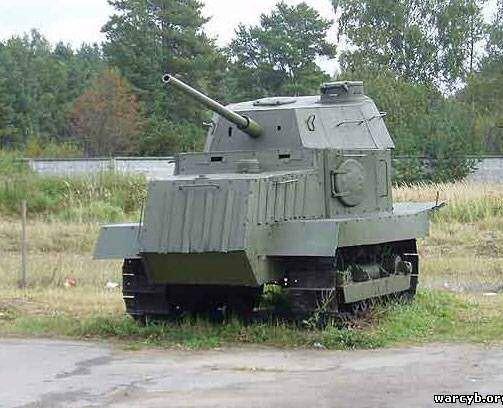
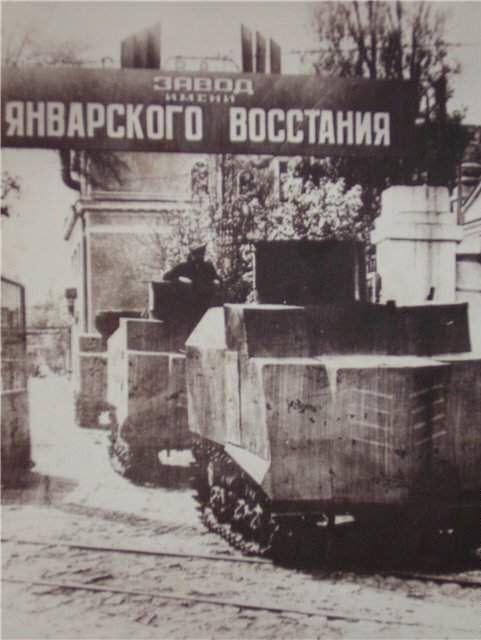

via Source

On the night of September 20, 1941 20 tanks were used in the battle against the Romanian part of the siege of the city, with a special rate has been made on the psychological effects of the use of tanks. Tanks were included lights and siren and without artillery support, they moved to the Romanian trenches. The enemy was put to flight. After this fight the tanks stuck the name "NO-1", which stands for "Fright". This term is explained by the fact that in the absence of large-caliber guns muzzle light guns were increased to make the tanks more "serious" look, and sometimes simply installed on tanks dummy guns (like the car in the photo). In addition, according to the recollections of veterans, while driving a tank published a terrifying roar.

According to reports, the autumn of 1941 from 50 to 60 bronetraktorov was released Kharkov Tractor Plant. The story of their creation is as follows: After a series of defeats suffered by the Red Army in the summer of 1941, and large losses in tanks, the Soviet leadership has adopted a number of urgent measures. July 20, 1941 as a result of the meeting of T-bills of the USSR adopted a resolution number 219 "On organization of production of 2 million bronetraktorov." In accordance with mass production scheduled to deploy to bronetraktorov two tractor-leading enterprises: Kharkov Tractor (HTZ) and the Stalingrad Tractor (STZ) plants. And bronetraktora had to be by-products: both in the factories was a preparation for the production of tanks - medium T-34 at Stalingrad, and light T-60 at the Kharkov. The project is commissioned to develop a design office of a tank of NATI. It was supposed to book and equip the tractor 45-mm tank gun and use as anti-self-propelled guns. In early August, NATI experienced four experimental sample bronetraktorov with 45-mm cannon, constructed on the basis 1TMV, STZ-3, SKHTZ Nati and STZ-5. For mass production opted for on the basis of STZ-3 when booking tractor chassis was reinforced, and to ride on it established a rubber-coated rollers and tracks with tractor STZ-5. The cab driver was dismantled in its place was set with armored cockpit armor thickness of 10-25 mm. Bronetraktor armed with 45-mm tank gun 20K samples 1932/34/37's. For melee crew had gun DP transported inside. Ustanavlemaya gun had limited angles of fire - to impose it on purpose it was necessary to deploy the entire tractor. When serial production machine received index HT3-16 (sometimes held in the documents as the T-16). Taking into account that the FTZ has mastered the production of T-34 tanks, and HTZ just begun preparatory work for the production of T-60, the People's Commissar for Tank Industry VA Malyshev, it was decided the bulk of production bronetraktorov deploy in Kharkov. The plan provided for manufacture by October 1941 at the Kharkov Tractor nearly a thousand HTZ-16, 500 more in Stalingrad. Bronedetali for them was to deliver Novokramatorsky Machine Works. The latter, in turn, got rolling with Mariupol Ilyich. Bronetraktorov production began in late August 1941, but due to constant failures with accessories, and did not work on the high-volume level. Accurate data on the combat use of these machines, but there is every reason to believe that they were used in the defense of Kharkov in the autumn of 1941.

It is also known about the participation of improvised armored vehicles in the defense Moonsund islands. Thus, in order to strengthen the fire defense, defenders of the islands on their own initiative built tractors from 4 tanks armed with machine guns. On "ezelskih tanks" after the war in great detail recalled the former in 1941, the translator of one of the two Estonian battalions BEAVER Islander A.Klaas. Give him the word: "... tractor-tank was built in Kuressaare apprenticeship under the guidance of masters and Helga Oyasauna. Served as the basis of the tank-type tractor NATI instead cab and bonnet was made impervious to bullets superstructure. Empirically, it was found that six-millimeter steel sheet, even when taken twice or three times, does not protect against rifle bullets. Then the master chose this way: between two steel plates leaves a gap of 3 - 4 inches and fill it with cement. These plates are protected even from armor-piercing bullets. All the superstructure of the tank was cooked pieces of flat plates, as in schools bending plate was impossible. And failed to make a rotating turret - had on each side of the tower to make a hole for the shooting, from which you can stick the barrel of a rifle or light machine gun. In the tank could fit three. Just Kuressaare vocational school was built four such tanks ».



via Source
